Abstract
Several N-(ω-p-aminophenoxyalkyl)amides were active against Schistosoma mansoni in mice. One of the most effective, N-(5-p-aminophenoxypentyl)benzamide (M&B3002), acted more rapidly than lucanthone on adult worms but less rapidly than antimony potassium tartrate. It was inactive against immature worms. This compound and M&B2948A (N-(5-p-aminophenoxypentyl)phthalimide) were both active against S. mansoni in hamsters. In monkeys M&B2948A was inactive, whilst M&B3002 was not tested for therapeutic activity. Several of the compounds were examined for the production of visual impairment in cats. Although this property was not entirely absent, its incidence was very much lower in this amide series than among other ω-p-aminophenoxyalkyl derivatives not containing an amide group. M&B3002 and M&B2948A produced impairment of vision in only a small proportion of the large number of cats tested. The general toxicology of the two drugs was studied in several species, and also their absorption and excretion in mice and rats; this was to provide information for a clinical trial.
Full text
PDF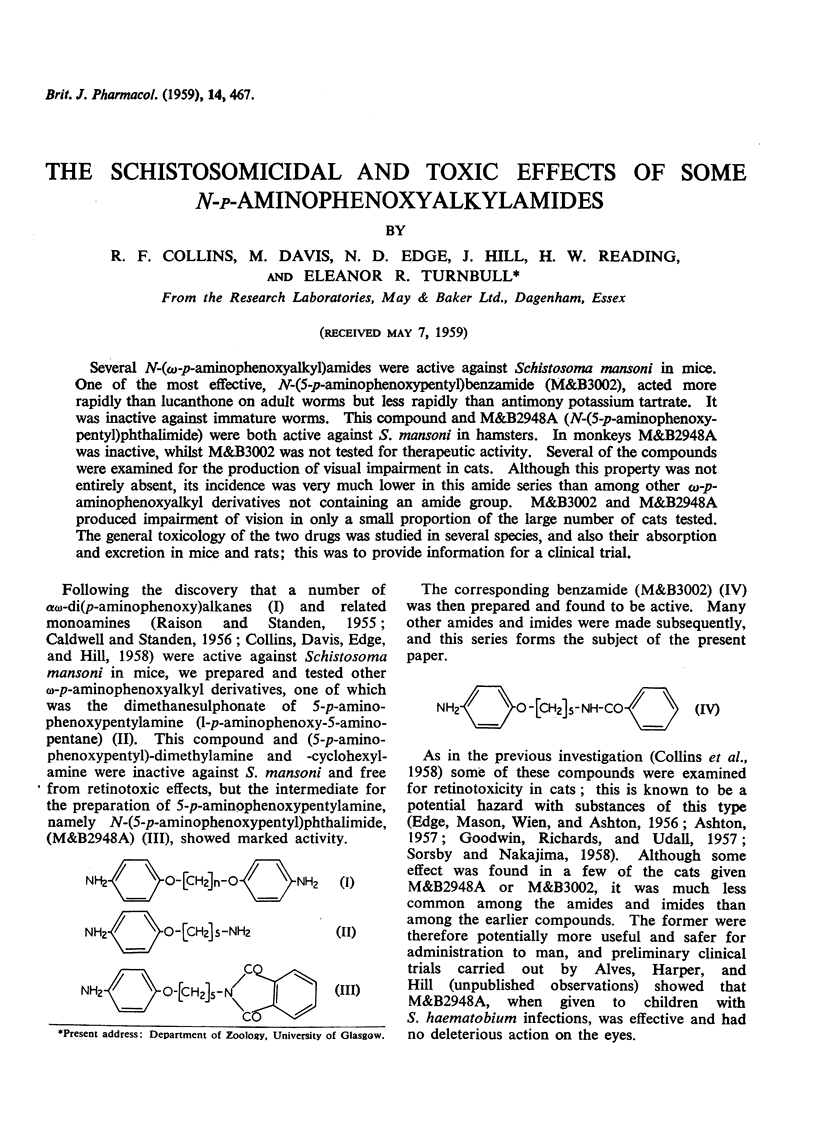
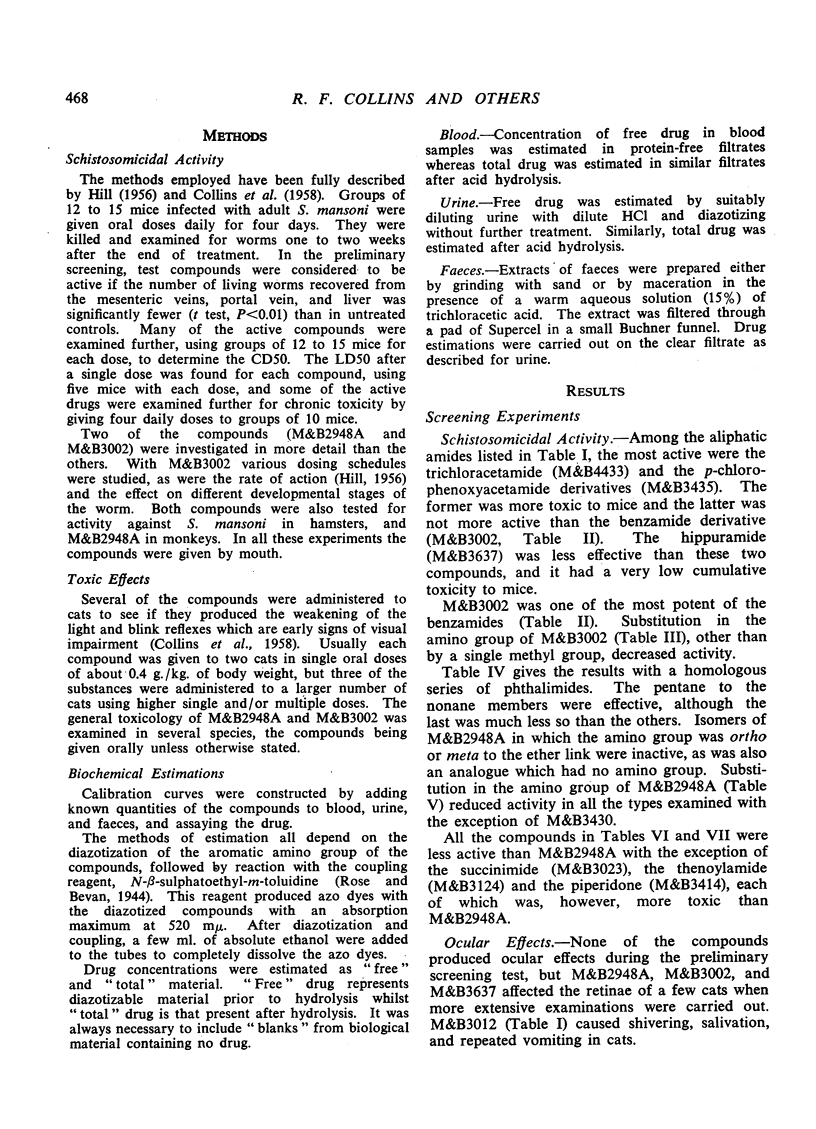
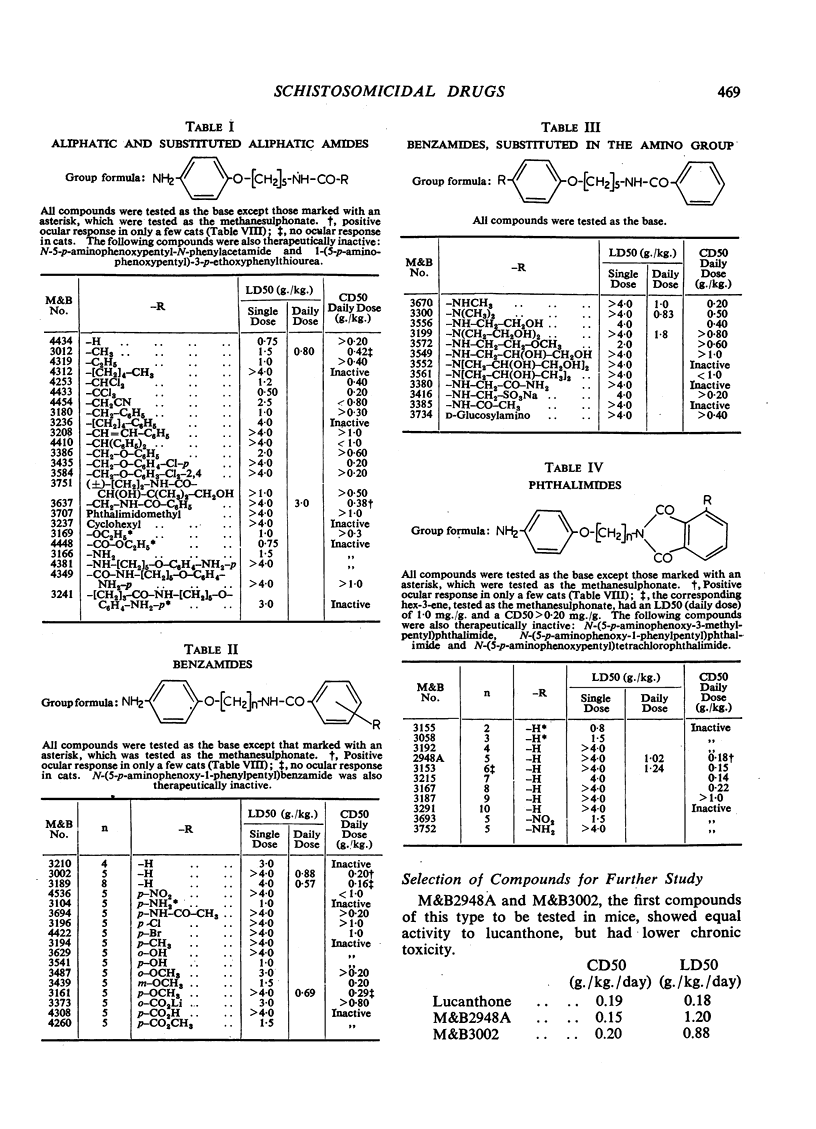

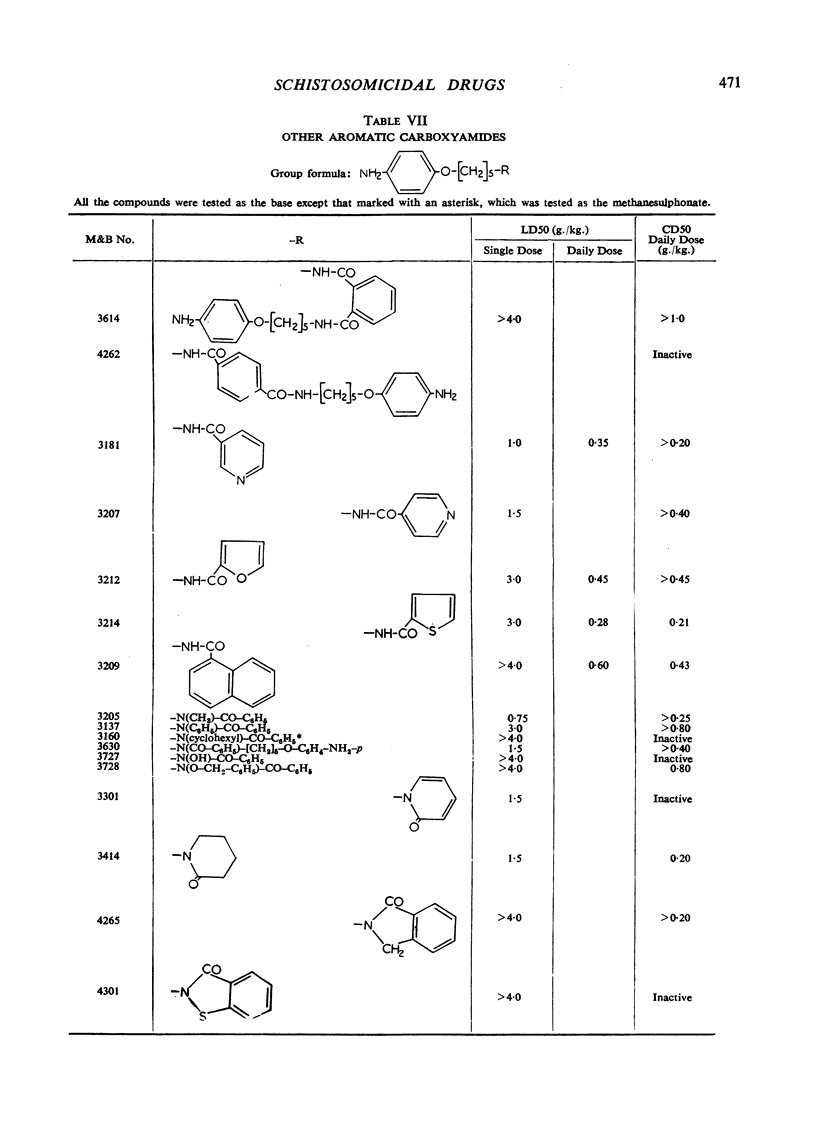
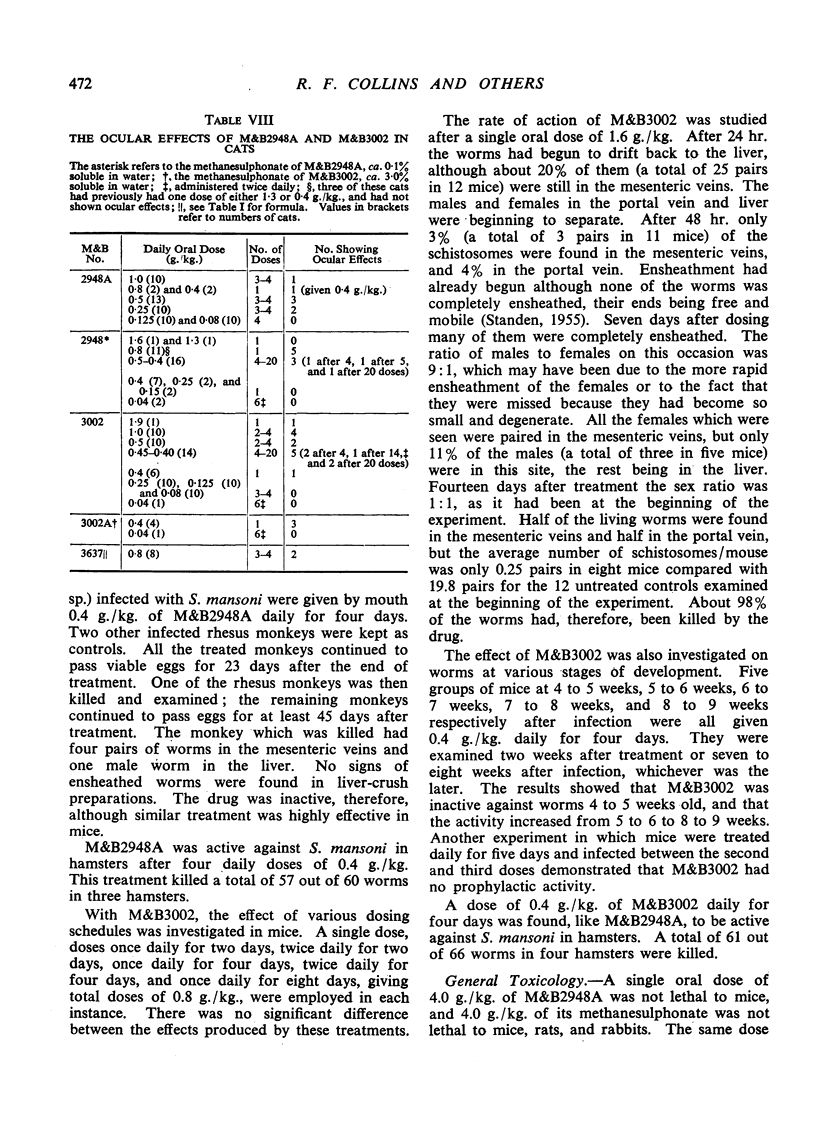
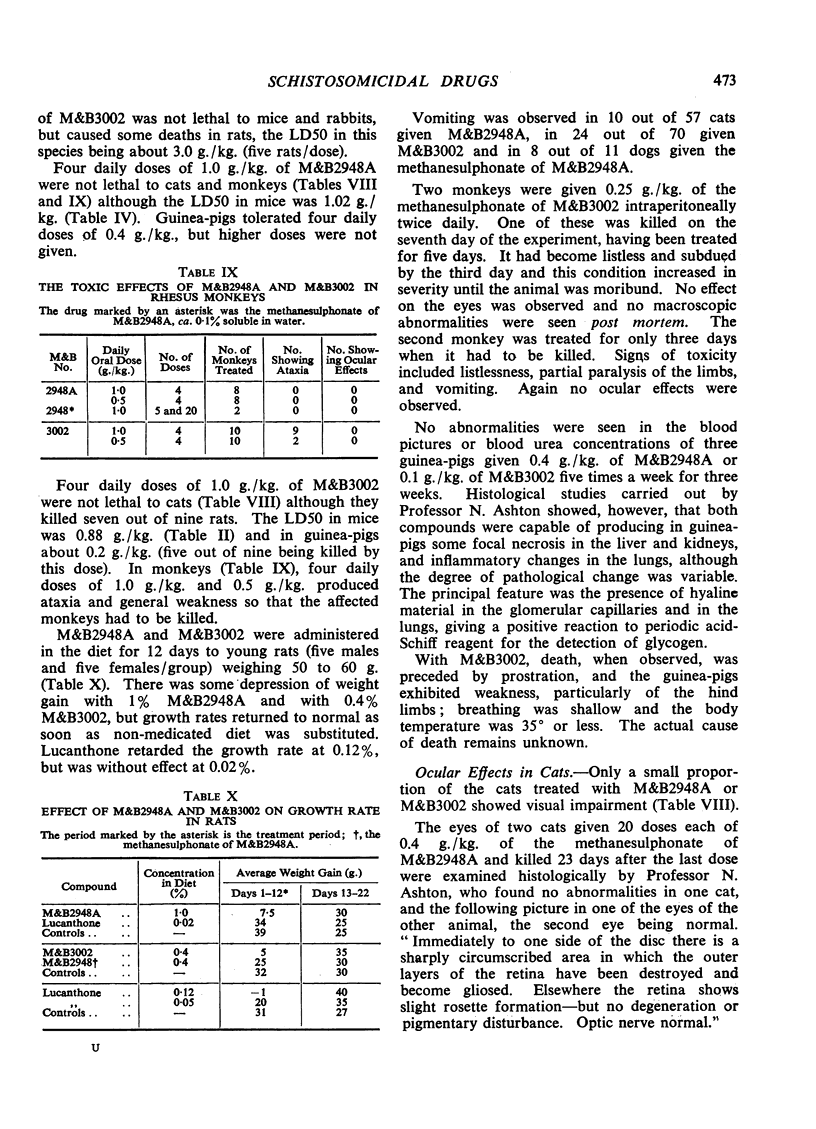
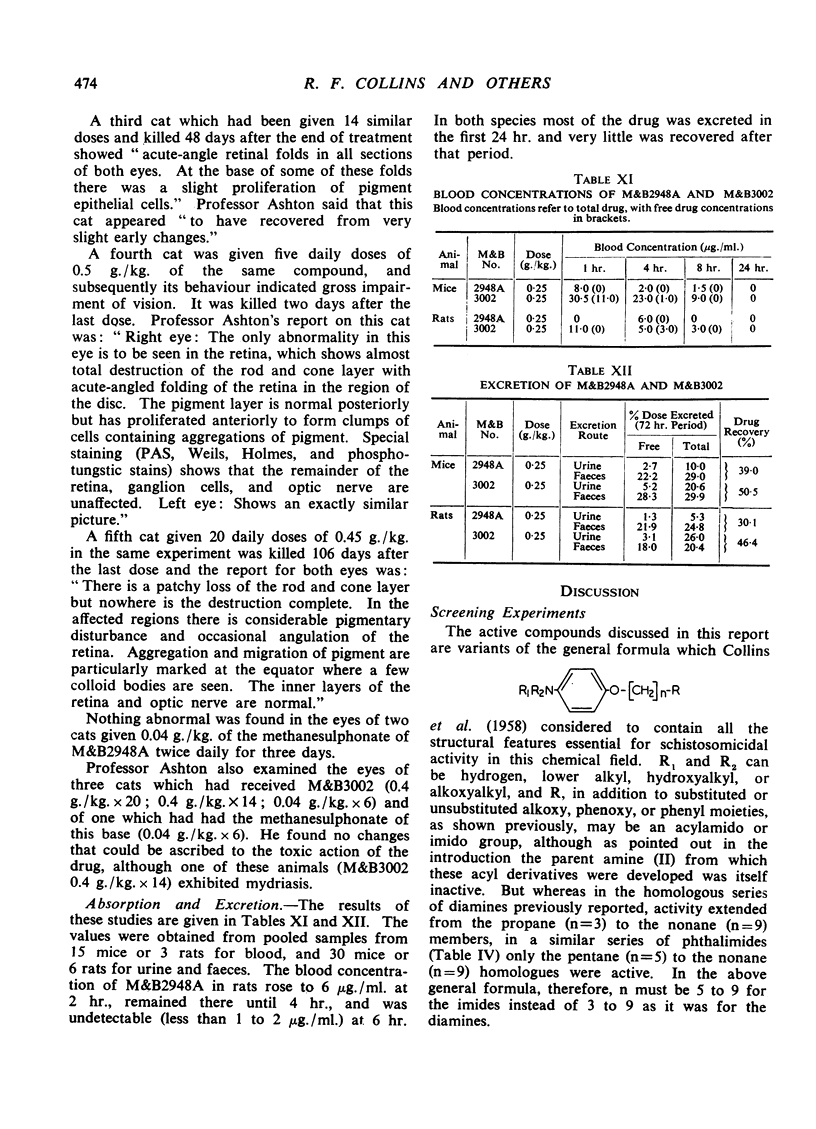
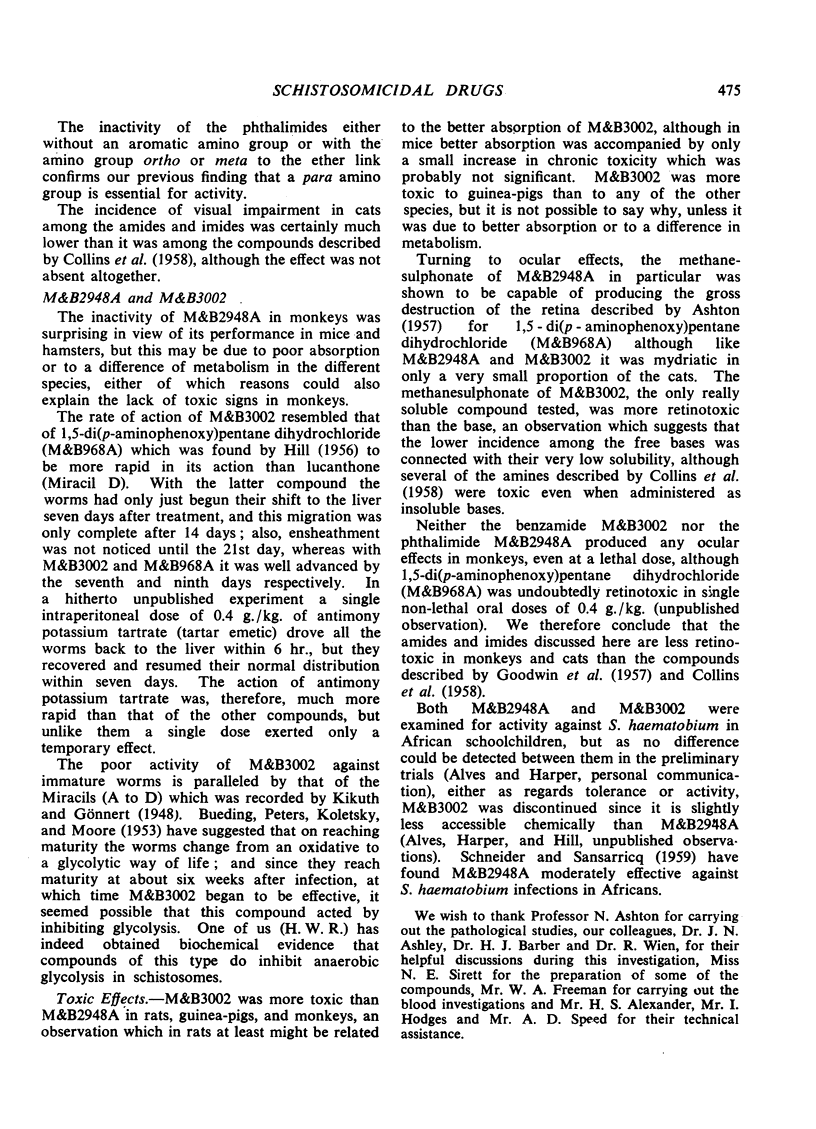
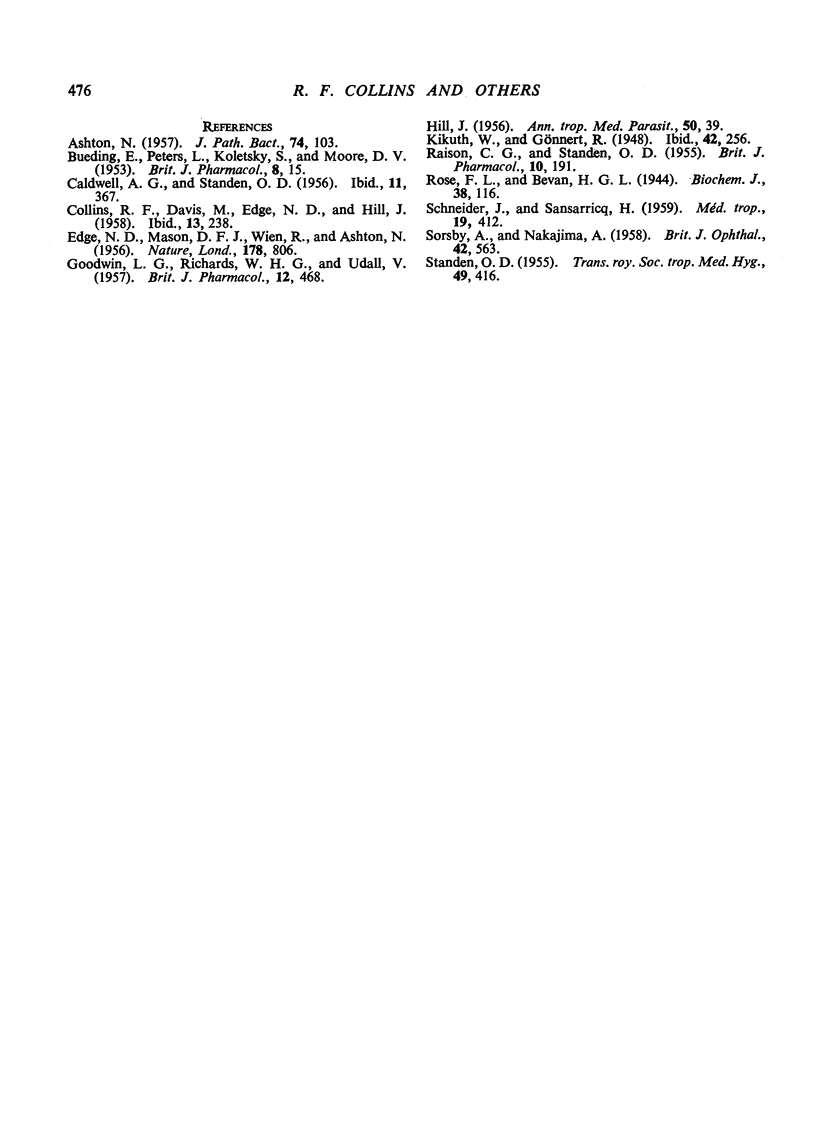
Selected References
These references are in PubMed. This may not be the complete list of references from this article.
- BUEDING E., PETERS L., KOLETSKY S., MOORE D. V. Effect of respiratory inhibition on Schistosoma mansoni. Br J Pharmacol Chemother. 1953 Mar;8(1):15–18. doi: 10.1111/j.1476-5381.1953.tb00741.x. [DOI] [PMC free article] [PubMed] [Google Scholar]
- CALDWELL A. G., STANDEN O. D. The activity of p-aminophenoxyalkane derivatives against Schistosoma mansoni. Br J Pharmacol Chemother. 1956 Dec;11(4):367–374. doi: 10.1111/j.1476-5381.1956.tb00004.x. [DOI] [PMC free article] [PubMed] [Google Scholar]
- COLLINS R. F., DAVIS M., EDGE N. D., HILL J. The schistosomicidal and toxic effects on some alphaomega-di (p-aminophenoxy)alkanes and related monoamines. Br J Pharmacol Chemother. 1958 Sep;13(3):238–243. doi: 10.1111/j.1476-5381.1958.tb00897.x. [DOI] [PMC free article] [PubMed] [Google Scholar]
- EDGE N. D., MASON D. F., WIEN R. Pharmacological effects of certain diaminodiphenoxy alkanes. Nature. 1956 Oct 13;178(4537):806–807. doi: 10.1038/178806a0. [DOI] [PubMed] [Google Scholar]
- GOODWIN L. G., RICHARDS W. H., UDALL V. The toxicity of diaminodiphenoxyalkanes. Br J Pharmacol Chemother. 1957 Dec;12(4):468–474. doi: 10.1111/j.1476-5381.1957.tb00167.x. [DOI] [PMC free article] [PubMed] [Google Scholar]
- HILL J. Chemotherapeutic studies with laboratory infections of Schistosoma mansoni. Ann Trop Med Parasitol. 1956 Mar;50(1):39–48. doi: 10.1080/00034983.1956.11685737. [DOI] [PubMed] [Google Scholar]
- RAISON C. G., STANDEN O. D. The schistosomicidal activity of symmetrical diaminodiphenoxyalkanes. Br J Pharmacol Chemother. 1955 Jun;10(2):191–199. doi: 10.1111/j.1476-5381.1955.tb00082.x. [DOI] [PMC free article] [PubMed] [Google Scholar]
- Rose F. L. A new coupling component and simplified method for the estimation of sulphanilamide drugs. Biochem J. 1944;38(1):116–116. doi: 10.1042/bj0380116. [DOI] [PMC free article] [PubMed] [Google Scholar]
- SCHNEIDER J., SANSARRICQ H. [The anti-bilharzial activity of N-(p-amsinophenoxy)-5-phthalimidopentane (RP 6171). Apropos of 43 cases of vesical bilharziasis caused by Schistoma haematobium]. Med Trop (Mars) 1959 Jul-Aug;19:412–424. [PubMed] [Google Scholar]
- SORSBY A., NAKAJIMA A. Experimental degeneration of the retina. IV. Dia-minodiphenoxyalkanes as inducing agents. Br J Ophthalmol. 1958 Sep;42(9):563–571. doi: 10.1136/bjo.42.9.563. [DOI] [PMC free article] [PubMed] [Google Scholar]
- STANDEN O. D. The progress of degenerative changes in schistosomes following the treatment of experimental infections with 1:7-bis (p-dimethylaminophenoxy) heptane. Trans R Soc Trop Med Hyg. 1955 Sep;49(5):416–423. doi: 10.1016/0035-9203(55)90005-5. [DOI] [PubMed] [Google Scholar]


